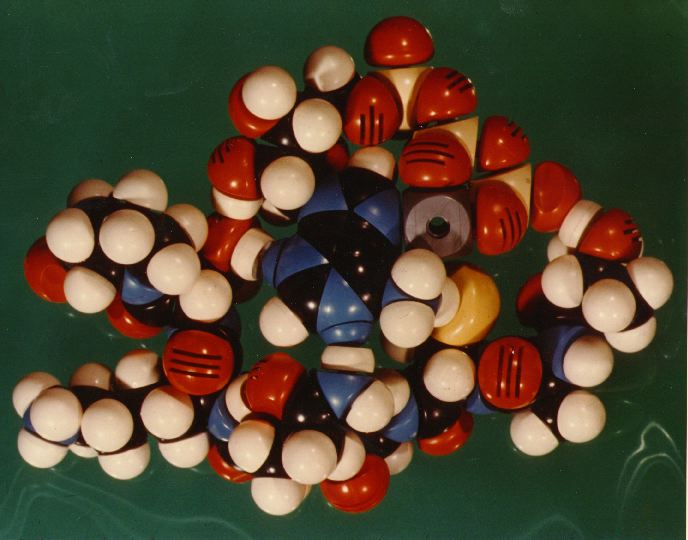An ATP-Binding Peptide.
George Barany and R.B. Merrifield
Cold Spring Harbor Symposium on Quantitative Biology 37, 121-125 (1973)

George Barany and R.B. Merrifield
Cold Spring Harbor Symposium on Quantitative Biology 37, 121-125 (1973)
The ATPase site of frog actomyosin was differentially labeled with N-ethylmaleimide (NEM). Five radioactive peptides were isolated and purified; analysis of amino acid overlap in hydrolysates of these peptides led to the conclusion that all were derived from the following single sequence: Thr-Ala-Cys-Gly-Gln-Lys-Ser-Pro. The title peptide was synthesized by solid-phase methods, purified by counter-current distribution, and tested for binding to MgATP. The affinity of the peptide for MgATP was 4.5 x 103 M-1, which is 250-fold lower than that of myosin for MgATP. For free ATP, the ratio of affinities was 25. After oxidation of the peptide (conversion of the cysteine moiety to a cysteic acid residue), the binding dropped 10- to 25-fold. This indicated a key role for the sulfhydryl group in the binding. All parts of the ATP molecule were involved in the binding. Free adenine had 30% of the binding activity of ATP. In addition, GTP and CTP were also bound, although less strongly than ATP. A model for the interaction of the active site peptide with its substrate was proposed.
Chem. Abstr. 79, 1986 (1973)